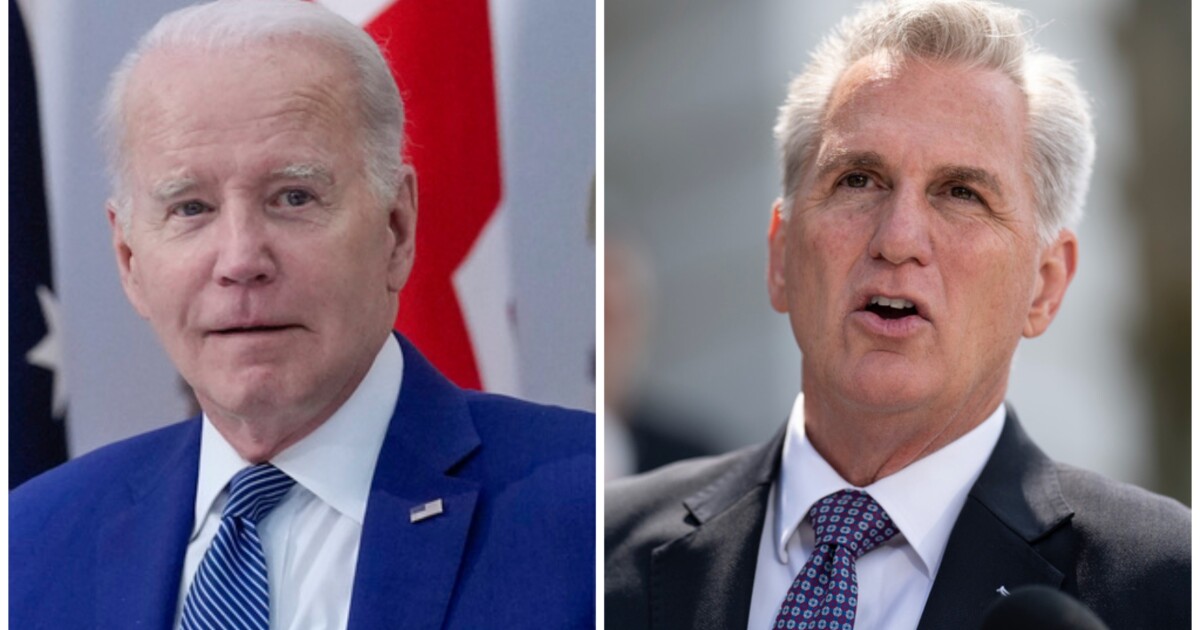

Bipartisan debt limit legislation appears poised to become law; here is how it compares to the Republican debt limit bill that was used as a jumping-off point for negotiations.
The GOP debt limit proposal narrowly passed the House last month with no Democratic support. It was never seen as having a realistic shot at becoming law, given it was essentially a wish list for Republicans, and Democrats control both the White House and Senate. The current debt ceiling deal, dubbed the Fiscal Responsibility Act, builds off the GOP package but is far less aggressive in slashing the federal deficit.
The basics
The GOP legislation, dubbed the Limit, Save, Grow Act, would have raised the $31.4 trillion debt ceiling over the next year either by $1.5 trillion or until March 31, 2024, whichever comes first. The debt limit was initially hit back in January, according to the Treasury Department.
DEBT LIMIT DEAL: WHERE IT STANDS AND WHAT IS STILL TO COME
A major difference from the GOP bill is that the McCarthy-Biden plan doesn’t actually raise the debt ceiling. Instead, it suspends the debt limit until after the next election cycle next year. The suspension will allow the Treasury Department to keep borrowing money to pay the country’s bills until January 2025, when the agreement ends.
The U.S. has been forced into periodic negotiations over the debt ceiling for a long time, and both proposals would set up another confrontation down the line.
Deficit reductions
The biggest priority for Republicans in their negotiations with the White House was exacting concessions on federal spending. GOP leaders hoped to use the moment to cut deeply into the country’s massive deficit, and that desire was on full display with the Limit, Save, Grow Act.
The GOP bill returned discretionary spending to fiscal 2022 levels and then would have imposed a 1% increase limit on spending in the following years.
The Congressional Budget Office estimated that the legislation would amount to a $4.8 trillion reduction in deficits over the next decade. The reductions would mostly be tied to cuts rather than increased tax revenue, and the spending cap would account for about two-thirds of the deficit reduction.
The Fiscal Responsibility Act, meanwhile, would slash the federal deficit by $1.5 trillion over the next decade, according to the CBO. The bill cuts nondefense discretionary spending next year and only allows a 1% increase for the next six years.
Discretionary spending includes federal rental assistance, grants for schools in low-income communities, research funding, and domestic law enforcement. It doesn’t include mandatory spending for programs such as Social Security and health programs, which account for the majority of federal spending.
IRS clawbacks
Both the Biden-McCarthy deal and the original Republican debt ceiling legislation peeled back some of the $80 billion in IRS funding granted to the tax collector under last year’s partisan Inflation Reduction Act.
Republicans have assailed the increased funding as unnecessary and have said, despite assurances to the contrary from Treasury Secretary Janet Yellen, that it could lead to increased audits on the middle class.
The GOP legislation would have clawed back most of the controversial boost to the IRS, to the tune of some $71 billion. A big part of that was preventing the IRS from hiring tens of thousands of new employees, which Republicans saw as overreach (proponents of the funding point out that the new hires would replace a large number of IRS employees expected to retire in the coming years).
The negotiated Fiscal Responsibility Act still yanks back some of the $80 billion IRS infusion, though. It pares the IRS funding down to $60 billion over the next decade, about a 25% reduction from the funding levels passed by Democrats last year.
Work requirements
The Republican legislation envisioned requiring Medicaid beneficiaries to work 80 hours per month (20 hours per week), although there were exceptions for people with dependents, those over the age of 56, and others. More than 92 million people were enrolled in Medicaid as of December, the majority of whom were children, disabled, or elderly.
The White House said that work requirements for Medicaid were a red line in negotiations, and indeed, they were not included in the bipartisan proposal.
CLICK HERE TO READ MORE FROM THE WASHINGTON EXAMINER
Still, Republicans got some concessions on expanded work requirements in the form of beefed-up requirements for the Supplemental Nutrition Assistance Program, better known as food stamps. Right now, those “capable” and aged 18-49 without dependents must report work. The new McCarthy-Biden plan increases the age limit to 54.
The GOP’s original plan was to raise that age limit to 56. As part of the negotiations, Democrats also included exemptions for veterans, homeless people, and 18-year-olds that have been living in foster care.




